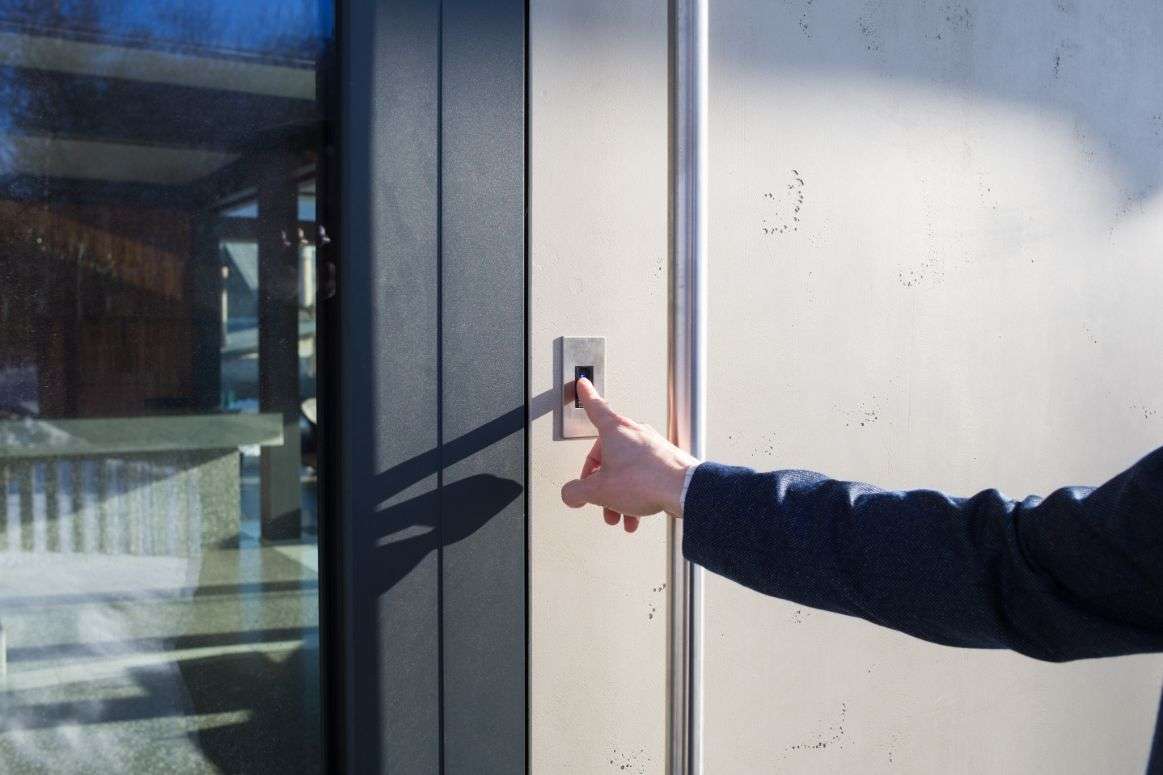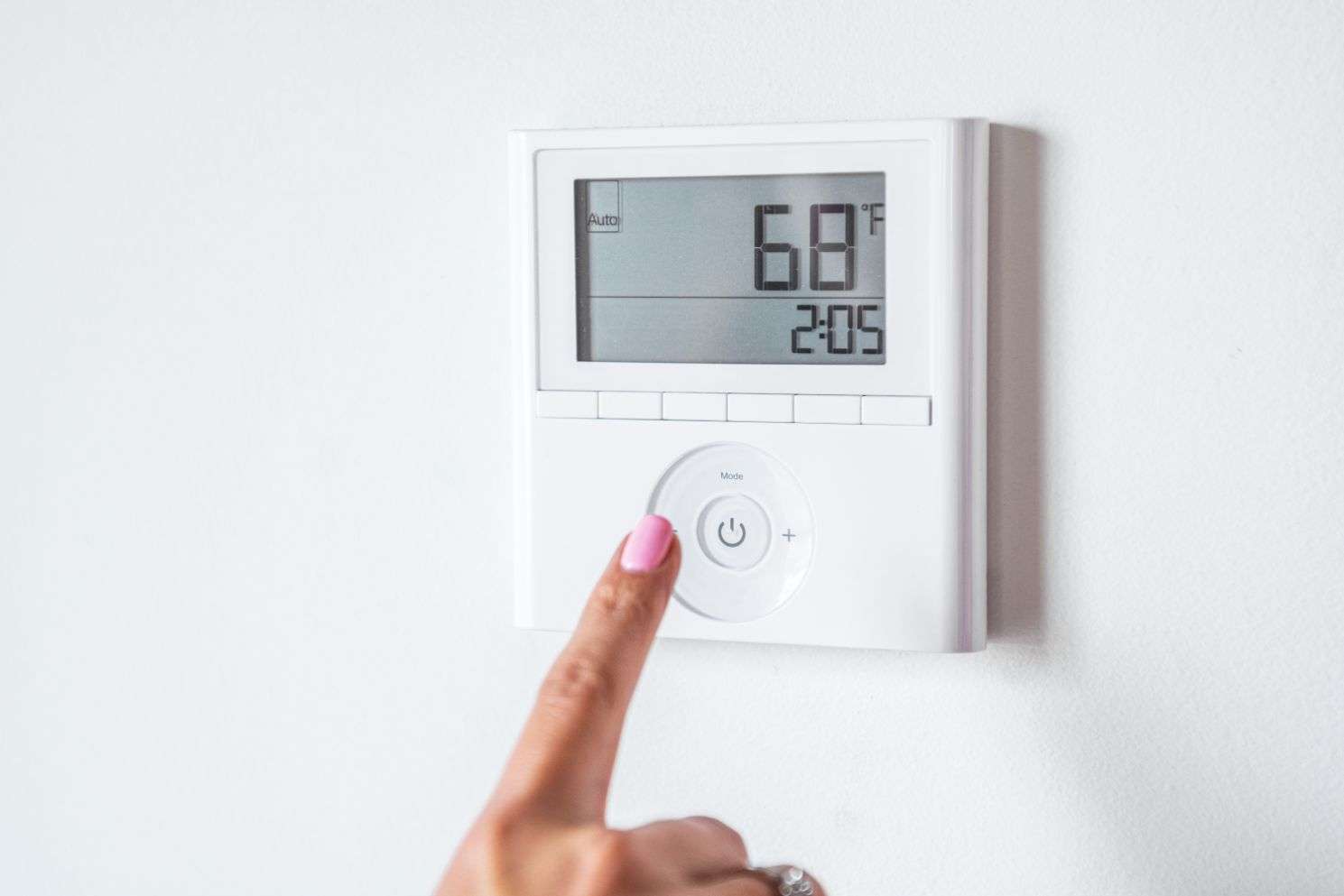In the quest for a safe and secure home environment, the role of technology has evolved immensely. Among the many tools in the modern homeowner’s arsenal, sensors have emerged as silent sentinels, tirelessly watching over your property day and night. What sensors do I need for home Security? Home security systems can vary in complexity, from the sentinel-like vigilance of Door and Window Sensors to the perceptive awareness of Motion Sensors, the acute listening of Glass Break Sensors, and the vigilant guardianship of Smoke Detectors, We’ll traverse the landscape of sensors that includes Temperature Sensors, Water Sensors, and Lighting Sensors, shedding light on how each contributes to a comprehensive home security system. Here are some sensors and devices you should consider for a comprehensive home security setup:
- Door and Window Sensors
- Motion Sensors
- Glass Break Sensors
- Smoke Detectors
- Temperature Sensors
- Water Sensors
- Lighting Sensors
Door and Window Sensors

In the realm of home security, the first line of defense often begins with the simple yet effective Door and Window Sensors. These unassuming devices play a crucial role in safeguarding your home by serving as the vigilant gatekeepers of its entry points. We will explore the significance and functionality of Door and Window Sensors within the broader context of home security systems. Door and Window Sensors are designed to perform a fundamental but essential task: monitoring the openings that provide access to your home. They consist of two parts, one attached to the door or window itself, and the other affixed to the door frame or window sill. This two-part configuration enables them to create a closed circuit when the door or window is in its normal, closed position. When someone attempts to open the door or window, the circuit is broken, triggering the alarm or alert.
Their simplicity is their strength. These sensors are the first to detect unauthorized entry attempts, providing an immediate alert to homeowners or a central monitoring system. They are the sentinels of your home’s perimeter, capable of sounding the alarm, notifying authorities, or activating other security measures in response to a breach. Door and Window Sensors are versatile, as they can be installed on virtually any entry point, from front doors and windows to sliding glass doors and basement windows. They are the initial barrier of protection, deterring potential intruders and granting homeowners precious time to react in the event of an intrusion.
Beyond their primary role in preventing break-ins, Door and Window Sensors can also be integrated into larger security systems, offering homeowners the convenience of remote monitoring and control through smartphone apps or home automation platforms.
This integration enhances their utility by allowing homeowners to check the status of doors and windows while away from home, ensuring peace of mind even when they are not physically present. In conclusion, Door and Window Sensors serve as the foundational components of a robust home security system. Their unobtrusive design, simplicity, and effectiveness make them an indispensable tool in protecting your home and loved ones from potential threats. As technology continues to advance, these sensors remain a timeless and essential feature in the pursuit of a safe and secure home environment.
Motion Sensors

Motion Sensors are a pivotal element in modern home security systems, offering a proactive layer of protection against unauthorized intrusions. Within the realm of home security, these sensors play a multifaceted role, employing advanced technology to detect movement within defined areas and trigger appropriate responses.
Principle of Operation
At the heart of Motion Sensors lies their core principle of operation: detecting changes in infrared radiation or other environmental factors. These sensors monitor designated spaces for alterations in heat, movement, or other patterns that deviate from the norm. When such deviations are detected, the sensor triggers an alarm or activates other security measures.
Types of Motion Sensors
Motion Sensors come in various types, including passive infrared (PIR), microwave, ultrasonic, and dual technology sensors. Each type has its strengths and weaknesses, making it suitable for specific applications. PIR sensors, for instance, are sensitive to body heat and movement, making them ideal for indoor use. Microwave sensors use radio waves to detect motion and are better suited for outdoor applications.
Placement and Coverage
Strategic placement of Motion Sensors is crucial to their effectiveness. These sensors should be positioned in areas where intruders are likely to pass, such as hallways, entrances, and open spaces. Coverage patterns vary depending on the sensor type, so it’s essential to consider the specific needs of your home when determining placement.
False Alarms Mitigation
Motion Sensors are designed to detect movement, but they can also trigger false alarms due to pets, moving objects like curtains, or sudden temperature fluctuations. To mitigate false alarms, modern Motion Sensors often incorporate advanced features like pet immunity settings and adjustable sensitivity levels.
Integration with Security Systems
Motion Sensors can be seamlessly integrated into broader home security systems. They work in conjunction with other sensors, alarms, and surveillance cameras to provide a comprehensive security solution. When integrated with smart home platforms, they enable remote monitoring and control, enhancing convenience and security.
Applications Beyond Security
While Motion Sensors are primarily associated with security, they have broader applications within smart homes. They can automate lighting, climate control, and other systems, enhancing energy efficiency and convenience. Motion Sensors are pivotal components in contemporary home security, serving as vigilant sentinels that detect unauthorized movement and potential threats. Their versatility, precision, and adaptability make them an integral part of a holistic security strategy. By understanding the principles of operation, types, placement considerations, and their role in broader security systems, homeowners can harness the power of Motion Sensors to bolster the safety and protection of their homes.
Glass Break Sensors

Glass Break Sensors are a critical component of comprehensive home security systems, designed to detect and respond to the distinctive sound frequencies produced when glass shatters. In this section, we will delve into the vital role that Glass Break Sensors play in safeguarding homes, exploring their operation, placement considerations, and their contribution to a layered security approach.
Operation and Sound Recognition
Glass Break Sensors operate on the principle of sound recognition. When a pane of glass breaks, it emits specific acoustic frequencies that are distinct from other household noises. These sensors are finely tuned to recognize these unique frequencies, triggering an alarm when they are detected.
Versatile Application
The versatility of Glass Break Sensors is one of their key strengths. They can be applied to various types of glass surfaces, including windows, glass doors, and even glass display cases. This versatility makes them suitable for deployment in areas where conventional door/window sensors may not be practical or sufficient to provide adequate security coverage.
Placement Considerations
Strategic placement of Glass Break Sensors is crucial to their effectiveness. These sensors should be positioned within the vicinity of vulnerable glass surfaces, such as windows and glass doors. Consider placing them in rooms with large or easily accessible windows, as well as in areas where valuable items are stored.
Sensitivity Settings
Many modern Glass Break Sensors come equipped with adjustable sensitivity settings. These settings allow homeowners to fine-tune the sensor’s responsiveness, thereby minimizing the risk of false alarms. By customizing the sensor’s sensitivity to suit the specific acoustic conditions of the monitored area, homeowners can ensure that it reliably distinguishes the sound of breaking glass from other non-threatening noises, like loud music or the occasional bump.
Integration with Security Systems
Glass Break Sensors can be seamlessly integrated into broader home security systems, working in concert with other sensors, alarms, and surveillance cameras. Their integration enhances the overall security posture of the home, providing a comprehensive response to potential intrusions.
Enhancing Perimeter Security
In terms of security layering, Glass Break Sensors play a pivotal role in enhancing perimeter security. While door/window sensors primarily focus on monitoring access points, Glass Break Sensors extend their protective reach to detect intrusions at vulnerable glass surfaces. This approach creates an effective dual layer of defense, making it considerably more challenging for unauthorized individuals to breach your home’s security.
Deterrent Effect
Beyond their primary function of detection, the presence of Glass Break Sensors can act as a deterrent to potential burglars. The knowledge that these sensors are in place can dissuade criminals from attempting a break-in in the first place. Glass Break Sensors are indispensable tools in a comprehensive home security strategy, offering specialized protection for areas vulnerable to glass breakage.
Smoke Detectors

When it comes to home security, safeguarding against not only external threats but also internal hazards is paramount. Among these internal threats, fires pose one of the gravest dangers to both life and property. This is where Smoke Detectors assume a crucial role in comprehensive home security systems. In this section, we will explore the significance and functionality of Smoke Detectors within the broader context of home safety.
Smoke Detectors are engineered to serve as vigilant sentinels, tirelessly monitoring the air for the presence of smoke, a primary indicator of a potential fire. These devices operate on the fundamental principle of photoelectric or ionization technology. In the case of photoelectric sensors, they utilize a light source and a light receptor. When smoke particles enter the sensor chamber, they scatter the light, triggering the alarm. Ionization detectors, on the other hand, rely on the ionization of air particles by a radioactive source, which leads to changes in electrical currents when smoke enters the chamber.
Smoke detector application within home security extends beyond the detection of fires; Smoke Detectors are designed to provide early warnings.
Upon detecting smoke, they emit a piercing alarm, giving occupants vital seconds or minutes to evacuate the premises or take appropriate action to mitigate the fire’s spread. This early warning is especially critical during nighttime hours when residents are asleep and less likely to notice the smell of smoke. Strategically placed throughout the home, Smoke Detectors create a network of protection. The National Fire Protection Association (NFPA) recommends placing Smoke Detectors in bedrooms, hallways, and common areas on each level of the home, ensuring comprehensive coverage. Furthermore, interconnected Smoke Detectors, where one detector’s alarm triggers all others in the network, enhance safety by alerting residents across the entire property.
In modern home security systems, Smoke Detectors can be integrated with central monitoring services, providing an added layer of safety. In the event of a fire, not only will the Smoke Detector sound an alarm, but it can also send a signal to a monitoring center, which can then dispatch emergency responders even if the occupants are unable to call for help. Smoke Detectors not only protect lives but also help safeguard property. Rapid fire detection and notification can reduce the extent of damage and increase the likelihood of salvaging valuable belongings.
Smoke Detectors are not just a component of home security; they are essential for home safety.
Their ability to detect the early signs of a fire and provide timely alerts can mean the difference between life and death in a fire emergency. As such, integrating Smoke Detectors into your home security system is not only prudent but also a moral imperative in ensuring the safety and well-being of your loved ones and your property.
Temperature Sensors

Temperature Sensors are often overlooked yet pivotal components in a holistic home security system. These sensors are designed to monitor temperature levels within the home, alerting residents to abrupt changes that could indicate fire, extreme weather conditions, or HVAC system malfunctions. In this section, we will delve into the multifaceted role of Temperature Sensors in home security and safety. At their core, Temperature Sensors are engineered to maintain a vigilant watch over temperature variations. When temperatures exceed or fall below predetermined thresholds, these sensors trigger alerts or alarms, prompting immediate action. This functionality extends their utility beyond mere comfort control, making them indispensable for early detection and prevention of potential hazards.
One of the primary applications of Temperature Sensors is fire prevention and early warning. These sensors can detect rapid temperature spikes, typically indicative of a fire outbreak. By triggering alarms or alerts in such scenarios, they provide valuable time for homeowners to respond promptly, potentially mitigating the fire’s severity and damage. Temperature Sensors also play a vital role in safeguarding against extreme weather conditions. In regions prone to severe cold or heat, these sensors can monitor indoor temperatures, ensuring that they remain within safe and comfortable ranges. This is especially crucial in homes with vulnerable occupants, such as the elderly or infants.
Additionally, Temperature Sensors contribute to energy efficiency and cost savings. They can monitor and optimize HVAC systems, ensuring that heating and cooling systems operate within specified parameters. This not only enhances the comfort of occupants but also reduces energy wastage and lowers utility bills. For homeowners who travel frequently or have secondary residences, Temperature Sensors offer remote monitoring capabilities. Through smartphone apps or web interfaces, users can check temperature status and receive alerts, providing peace of mind and the ability to take action even when miles away from home.
The integration of Temperature Sensors with broader home security systems further enhances safety and security.
These sensors can communicate with other devices, such as Smoke Detectors and security cameras, to provide a comprehensive response to emergencies. For instance, if a Temperature Sensor detects a sudden temperature increase and a Smoke Detector simultaneously activates, the system can immediately alert authorities or initiate evacuation procedures. Temperature Sensors are unsung heroes in the realm of home security and safety. Their ability to monitor temperature fluctuations and provide early warnings for various potential threats, from fires to extreme weather conditions, makes them a valuable addition to any home security system. By ensuring a prompt and informed response to changing temperature conditions, these sensors contribute to the safety, well-being, and overall peace of mind of homeowners.
Water Sensors

Water Sensors are unsung heroes in the realm of home security, dedicated to protecting your home from a silent yet potentially devastating threat—water damage. In this section, we will explore the multifaceted role of Water Sensors in safeguarding your property, using subheadings to provide a comprehensive understanding of their operation, placement, and integration within your overall home security system.
Principle of Operation
Water Sensors operate on a straightforward yet highly effective principle: detecting the presence of moisture. They utilize various technologies, such as conductivity or probes, to identify the presence of water or excessive humidity. When moisture is detected, these sensors trigger an alert, allowing homeowners to respond promptly to prevent or mitigate water-related damage.
Placement and Coverage
Strategic placement of Water Sensors is critical to their effectiveness. They should be installed in areas prone to water leaks or flooding, such as basements, laundry rooms, near water heaters, and under sinks. Additionally, placing them near appliances like dishwashers and refrigerators with water supply lines can provide early detection of potential leaks.
Early Detection of Leaks
Water Sensors serve as vigilant guardians against various water-related incidents, from small leaks to catastrophic failures. By detecting even minor leaks at their inception, these sensors enable homeowners to address issues before they escalate into costly and disruptive problems. Early detection can also prevent the development of mold and mildew, which thrive in damp environments.
Smart Home Systems
Many modern Water Sensors offer integration with smart home systems, enabling remote monitoring and control. Through smartphone apps or connected home platforms, users can receive real-time alerts and notifications, allowing for immediate response, even when away from home. To enhance overall home security, Water Sensors can be seamlessly integrated with other security devices. For example, they can trigger alarms or alerts that notify homeowners and central monitoring stations of potential water-related emergencies. This integration ensures a comprehensive response to both security and environmental threats.
Protection for Valuables
Water Sensors not only protect the structure of your home but also safeguard valuable possessions. Placing them in areas where you store important documents, electronics, or irreplaceable items ensures early detection of potential water damage threats, providing a layer of security for your valuables.
Preventing Costly Repairs
The financial benefits of Water Sensors cannot be understated. By detecting water issues early, these sensors can save homeowners substantial sums on repair costs and insurance deductibles. The investment in Water Sensors often pays for itself by preventing expensive water damage incidents. Water Sensors are invaluable assets in preserving the integrity and security of your home. Their ability to detect moisture and provide early warnings about potential water damage incidents not only prevents costly repairs but also contributes to the safety and well-being of your household.
Lighting Sensors

Lighting Sensor Operation
At the core of Lighting Sensors lies their fundamental principle—detecting changes in ambient light levels. These sensors are equipped with photocells or light-sensitive diodes that continuously monitor the surrounding light conditions. When the level of ambient light falls below a specified threshold, the sensor triggers the activation of connected lighting fixtures, illuminating the area. Lighting Sensors play a crucial role in bolstering home security. Activating outdoor lighting in response to motion or low light levels contributes to the overall safety of your home. Well-lit exteriors deter burglars and vandals by making it difficult for them to approach undetected.
Automated Lighting
One of the primary functions of Lighting Sensors is to automate lighting in response to changing environmental conditions. They ensure that your property remains well-lit during nighttime hours or in dimly lit areas. Automated lighting not only enhances visibility but also serves as a deterrent to potential intruders by reducing hiding spots around your property. While enhancing security, Lighting Sensors also promote energy efficiency. They ensure that outdoor lights are only active when needed, reducing energy consumption and lowering utility costs. This energy-conscious approach aligns with eco-friendly and cost-effective living.
Customization and Control
Modern Lighting Sensors offer a high degree of customization and control. Users can specify sensitivity levels, and lighting duration, and even tailor lighting schedules to match their preferences. This adaptability ensures that the lighting system aligns with the homeowner’s unique needs and lifestyle. Lighting Sensors can be seamlessly integrated with smart home systems, allowing for remote monitoring and control. Through smartphone apps or voice-activated assistants, homeowners can adjust lighting settings, receive real-time alerts, or even simulate occupancy when away from home, enhancing security.
Pathway Safety
Beyond security, Lighting Sensors improve overall safety by illuminating pathways, stairs, and entrances. This feature is especially beneficial for the elderly and young children, reducing the risk of trips and falls during nighttime hours. Lighting Sensors offer a dynamic and energy-efficient approach to home security and safety. Their ability to automate lighting, enhance visibility, and deter potential threats not only provides peace of mind but also promotes eco-conscious living. By strategically placing and integrating Lighting Sensors into your home security system, you can enjoy the benefits of a well-lit and secure home environment while simultaneously reducing energy consumption and associated costs.
In the symphony of home security, sensors play the harmonious notes that keep your sanctuary safe. From the watchful gaze of Motion Sensors to the vigilant ear of Glass Break Sensors, the diligent alertness of Smoke Detectors, the temperature-taming prowess of Temperature Sensors, the water-wise guardianship of Water Sensors, and the illuminating grace of Lighting Sensors, each note contributes to the masterpiece of your home’s security. As you compose the score of your home’s protection, consider the ensemble of sensors at your disposal, harmonizing seamlessly to provide the safety and peace of mind your family deserves. Jump into our website and elevate your security symphony today to ensure your home is a sanctuary of serenity and safety!
